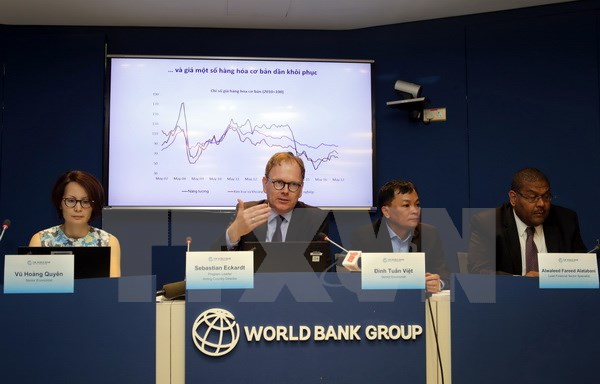Vietnamese economy shifts positively with stable prospects, says WB
VGP – The World Bank (WB) released its update on Viet Nam’s recent economic development on July 13 in Ha Noi.
|
|
|
Photo: VNA |
Addressing the event, chief economist Sebastian Eckardt, Acting Country Director of the WB in Viet Nam said the economy is still resilient thanks to stronger domestic demand and improving manufacturing and processing.
The maintained growth trend was a favorable factor for Viet Nam to handle obstacles in the medium term, serving to stabilizing the macro-economy and forging policy buffer.
The report said that the Vietnamese economy saw positive changes and rebounded in the first half of 2017. It recommended selective policies which help strengthen responsive capacity of the macro-economy and handle growth hindrances.
According to the report, Viet Nam’s GDP growth pace was estimated at 5.7% in H1 and inflation rate was kept below 2%.
According to the report, Viet Nam’s medium-term economic outlook will be optimistic with an estimated growth of 6.3% this year. Inflation will be stable on the back of low prices of food and energy. In the 2018-2019 period, , the growth is expected to touch 6.4%.
The report suggested Viet Nam continue taking cautious approach to steering the macro-economy by reducing overspending to curb increasing risks regarding budget sustainability and create fiscal space against potential shocks in the future.
Viet Nam needs to continue improving risk evaluation and monitoring capital safety to minimize arising risks amid credit extension, it said, adding that the country’s challenge is still how to sustainably maintain high growth and poverty reduction.
Barriers to the restructuring of State-owned enterprises and business climate improvement will continue to be removed.
The report also featured a special topic entitled “Towards strengthening high-quality financing” with a number of recommendations on quality fiscal policies, better budget collection, and public spending efficiency./.
By Kim Anh

